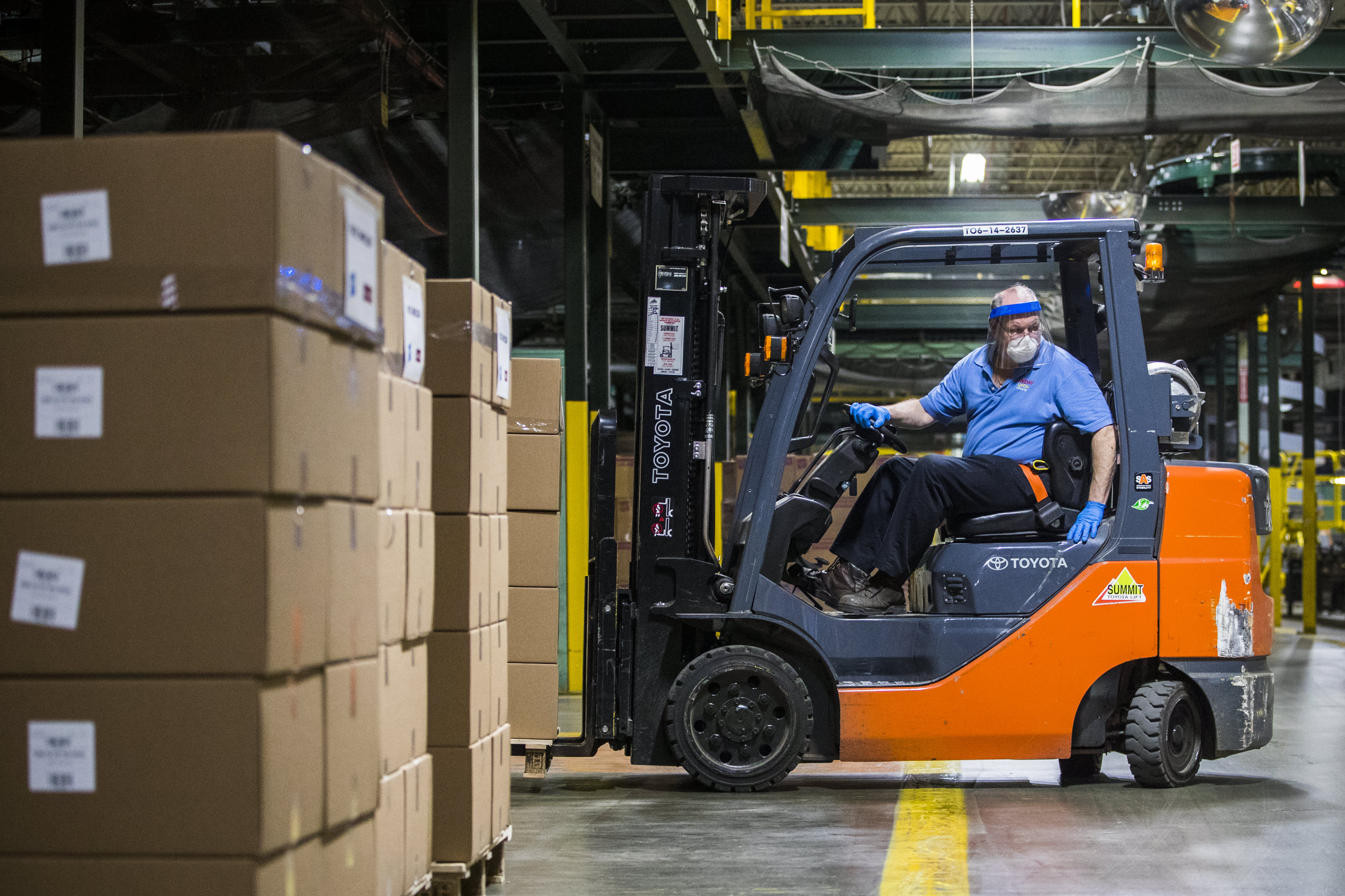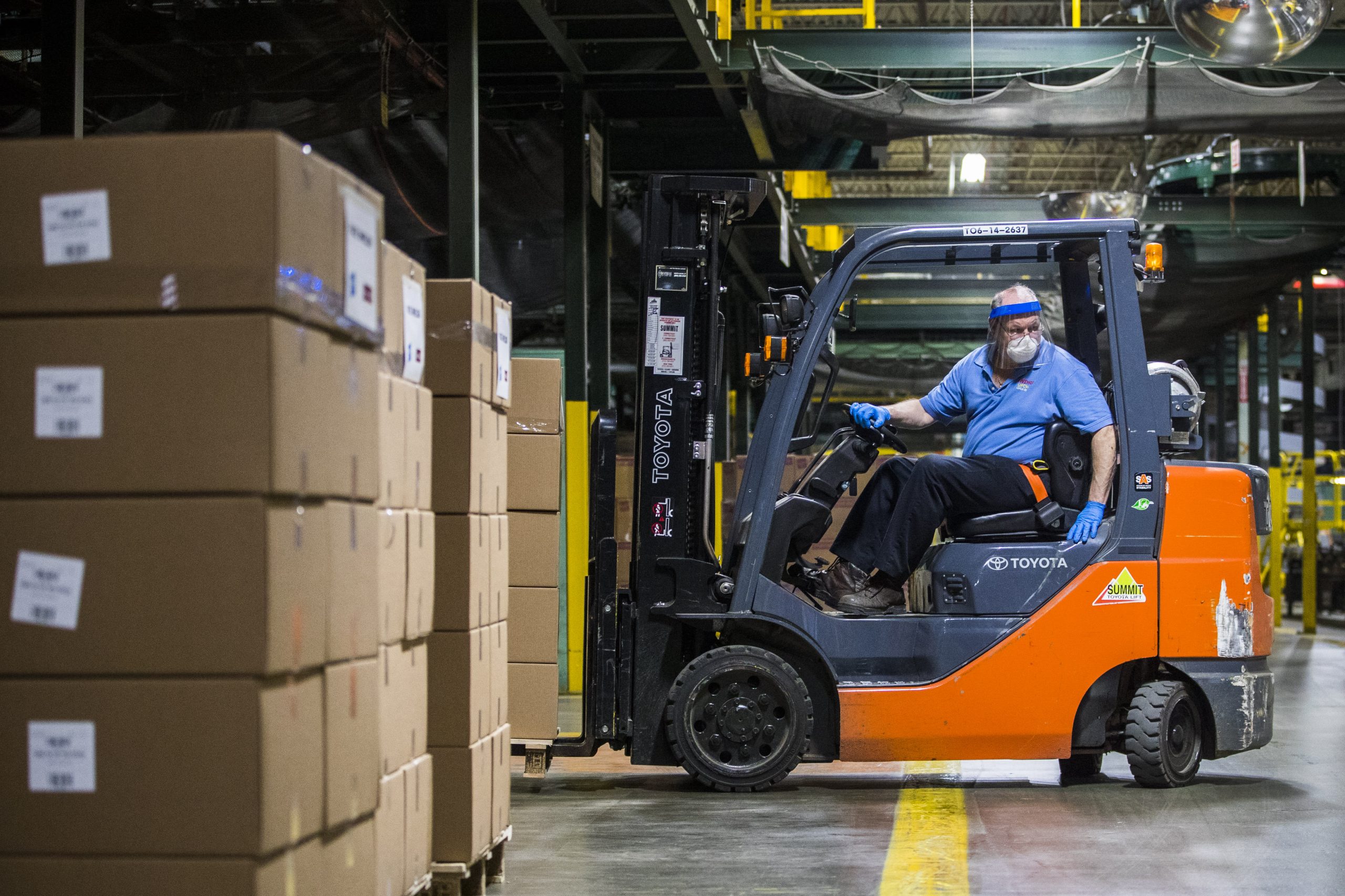
A worker wearing a protective face mask operates a forklift to move boxes of face shields ready for shipment at the Cartamundi-owned Hasbro manufacturing facility in East Longmeadow, Massachusetts, April 29, 2020.
Adam Glanzman | Bloomberg | Getty Images
U.S. producer prices increased more than expected in May amid a surge in the cost of meat, but the underlying trend in producer inflation remained subdued.
The Labor Department said on Thursday its producer price index for final demand rebounded 0.4% last month after plunging 1.3% in April, which was the biggest decrease since the series was revamped in December 2009. In the 12 months through May, the PPI decreased 0.8%. That followed a 1.2% decrease in April, the biggest drop since November 2015.
Economists polled by Reuters had forecast the PPI would gain 0.1% in May and decline 1.2% on a year-on-year basis.
The report followed data on Wednesday that showed consumer prices declined in May for a third straight month. The Federal Reserve also slashed its inflation projections for this year, 2021 and 2022 as the COVID-19 pandemic depresses demand.
Excluding the volatile food, energy and trade services components, producer prices edged up 0.1% in May after plunging 0.9% in April, the biggest drop since the introduction of the series in September 2013. The so-called core PPI had declined for three straight months.
In the 12 months through May, the core PPI fell 0.4%, the largest year-on-year decrease since the introduction of the series in August 2013. That followed a 0.3% drop in April.
The Fed tracks the core personal consumption expenditures (PCE) price index for its 2% inflation target. The core PCE price index increased 1.0% on a year-on-year basis in April, the smallest advance since December 2010. May’s core PCE price index data will be released at the end of the month.
In May, wholesale food prices increased 6.0%, accounting for nearly two-thirds of the 1.6% jump in goods prices, the largest increase since the series was revamped in November 2009. Food prices, which fell 0.5% in April, were boosted last month by a 40.4% surge in meat prices. Goods prices fell 3.3% in April.
Wholesale energy prices rebounded 4.5% after collapsing 19.0% in April. Gasoline prices shot up 43.9% after diving 56.6% in April, the largest decrease since the series began in February 1947. Core goods prices were unchanged last month after falling 0.4% in April.
The cost of services fell 0.2% in May after a similar decline in the prior month. Services were held down by a 0.8% drop in margins for final demand trade services, which measure changes in margins received by wholesalers and retailers. Prices for transportation and warehousing services advanced 1.5%.
The cost of healthcare services increased 0.5% after being unchanged In April. Portfolio management fees rebounded 3.9% last month after plummeting 12.0% in April. Those healthcare and portfolio management costs feed into the core PCE price index.


 Signal2forex.com - Best Forex robots and signals
Signal2forex.com - Best Forex robots and signals




